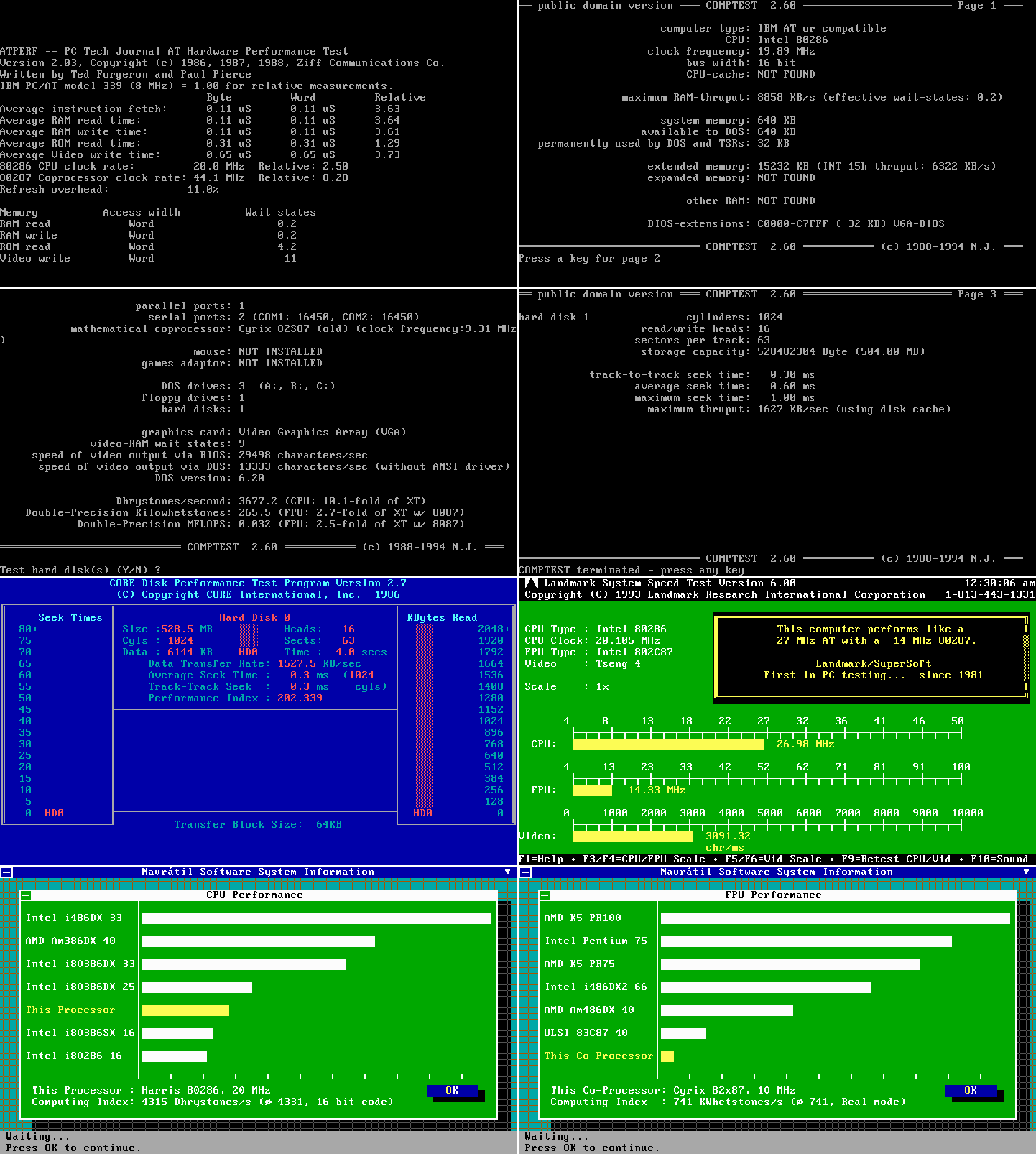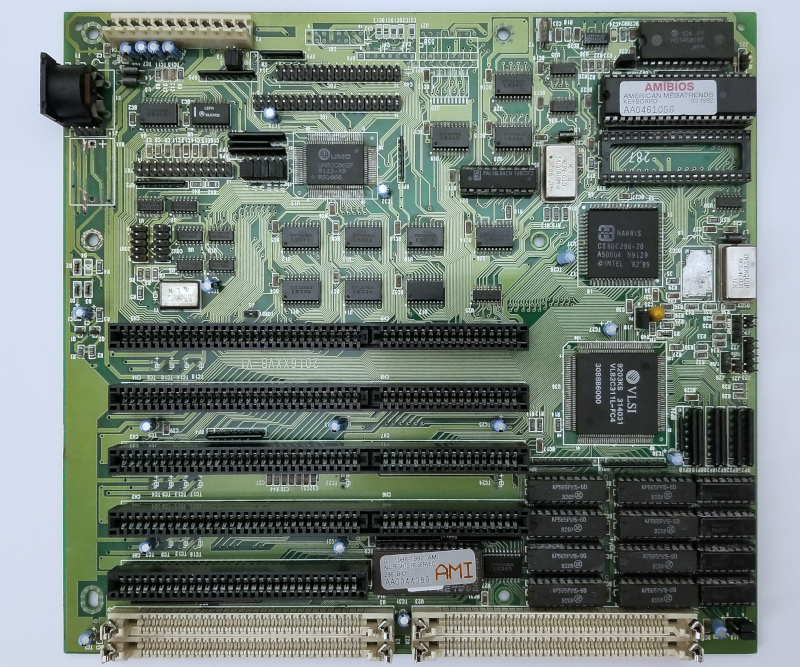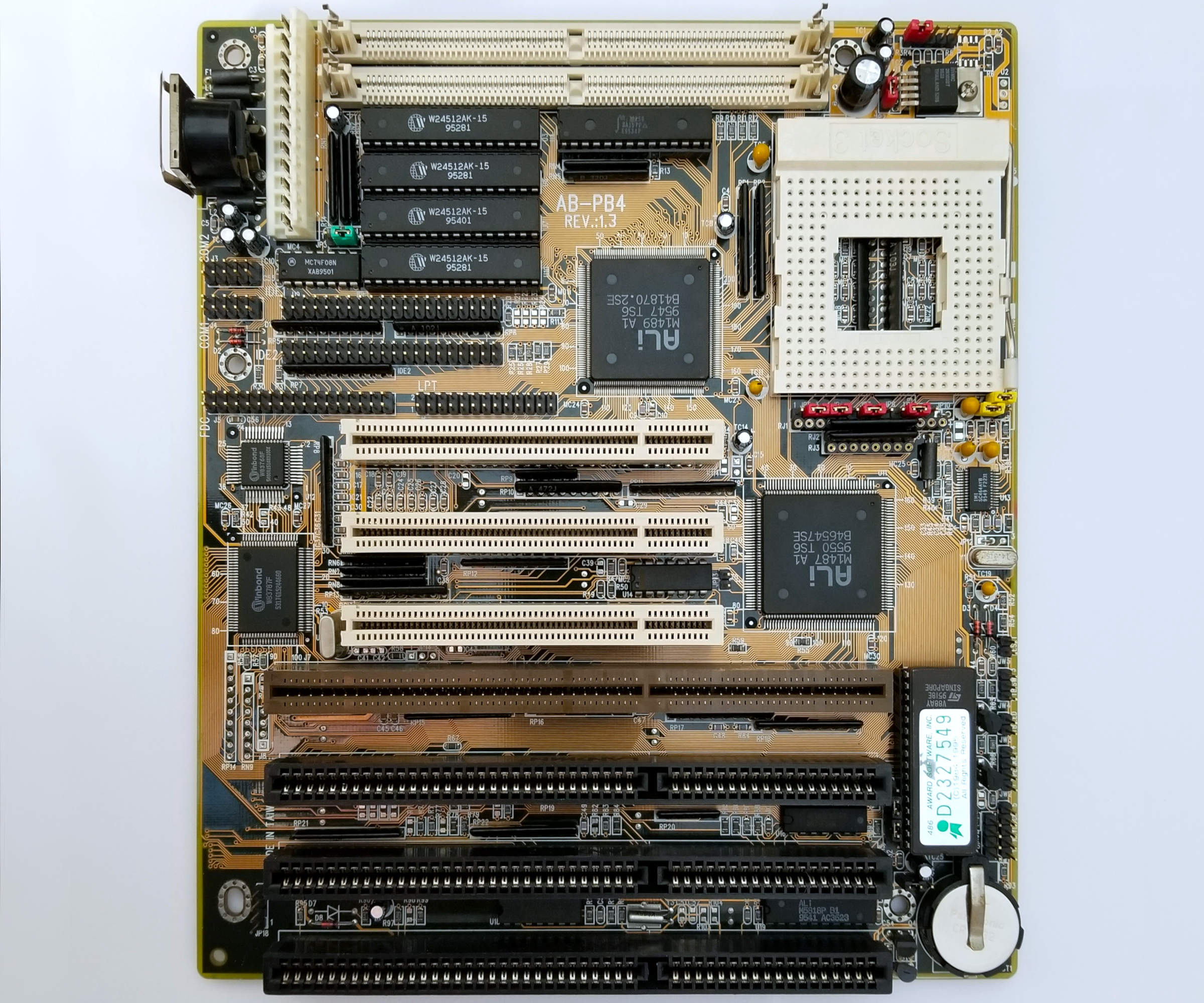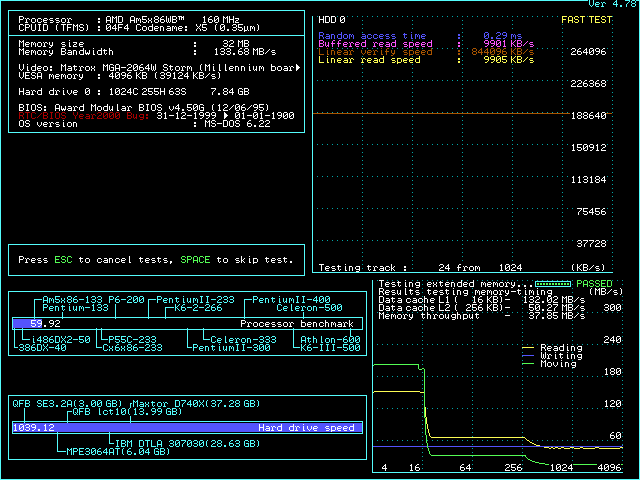Reply 160 of 2154, by pshipkov
Thanks for the drivers.
Will check them out and update the 2 speedsys screens posted in previous threads.
---
Not far ago a conversation about 286 motherboards built on 386 VLSI SCAMP chipset piqued my interest, so decided to check one of them myself.
Unnamed 286 motherboard with printed 2016XXVB-V1 on it. There is a small sticker on the back clarifying the release date - mid 1993.
Soldered 20Mhz Harris CPU, on-board IDE controller.
386 BIOS. Exactly the same as the one in Biostar_MB-1220VE (another SCAMP based 286 board).
Basically no jumpers. All perf settings are in the BIOS.
Came with 1Mb RAM, 60ns chips which is pretty rare.
Can take up to 32Mb of RAM.
2 Jumpers control which type of memory is used.
Inserted IIT 20MHz rated FPU for the tests.
All settings adjusted for maximum performance.
The on-board IDE controller stopped working under that configuration. Swapped it with external one and all was good.
Was thinking initially to swap the CPU to 25MHz one, but then decided to test it as is, compared to the very fast VLSI system from the first page, clocked to the same frequency.
The usual set of stats:

Performance is pretty bad.
Not sure what was the business logic behind releasing this motherboard in year 1993 with such characteristics.
Decided not to bother with swapping the CPU with 25MHz rated one.
In another thread was discussed the possibility of SCAMP potentially offering best perf in the 286 class, but it looks like VLSI produced just one good chipset - 16QC.


